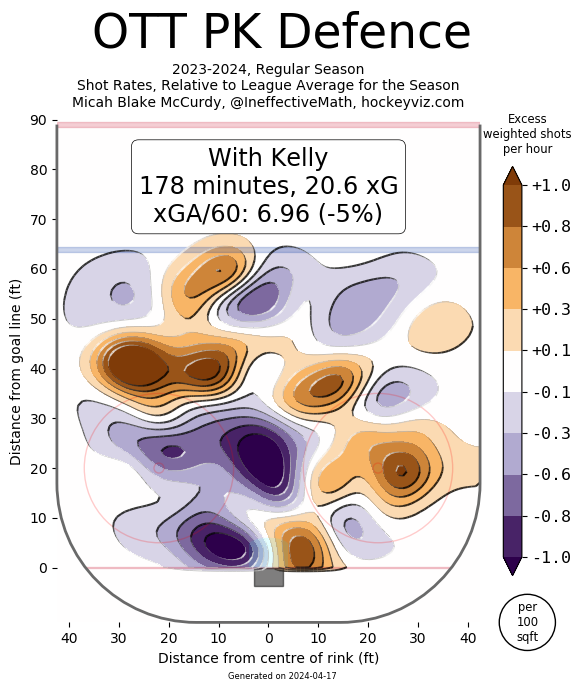Ottawa Senators Report Cards: Parker Kelly
The team's most-used PK forward had a career-best season

Staff Grade: B-, Reader Grade: B-
These articles normally start off by pointing out where a player set career highs. Of all the Sens players this past season, I'm not sure any had more career highs than Parker Kelly. He set new highs in games played (80, after a previous high of 55), goals (8 vs. 7), assists (10 vs. 5), points (obviously), time on ice per game (11:42 vs. 10:34), and shots (86 vs. 59). After many were questioning if he even deserved an NHL spot at the end of last season, he turned himself into a Swiss army knife this year, playing a key role as a fourth-liner, killing penalties, and occasionally finding his way up the lineup due to injuries. Sure, you don't want a player like Kelly in your top six for any stretch in general, but the fact that he got a bit of time on Tim Stützle's line at all to shake things up says something. Last year's Kelly wasn't getting that time; neither were this year's Mark Kastelic or Zack MacEwen.
Undoubtedly, where we saw Kelly's biggest impact this year was primarily on the penalty kill. He was third on the team in shorthanded minutes; not third among forwards, third among everyone. He was also third in shorthanded time per game, so it's not like he was just healthy in a season where a lot of players were injured. He was playing a full 40 seconds more shorthanded than Ottawa's second PK pairing of Brännström–Bernard-Docker. He also held his own in those minutes, with the Sens PK allowing 5% fewer expected goals than the league-average PK. In particular, you can see that with Kelly (and Ottawa's PK in general) allowed point shots from the left side, but did allow more chances down low on the right side. Overall, Ottawa's PK was fairly strong with Kelly, which is exactly what you want to see with your most-used PK forward.

At even strength, we still can see his impact. Guys like Kastelic, Chartier, and Katchouk all saw their 5v5 expected goals percentage (per Natural Stat Trick) climb with Kelly on the wing. As I said before, what you want out of a guy like Kelly is to hold his own in the limited minutes he gets. It's clear that Kelly was mostly able to do that, all the more so when he was given more competent complements like Chartier and Katchouk. It looks like those two guys with Kelly would be a fine, unexciting fourth line next year, in no small part due to Kelly's emergence as an unexciting, reliable option.
One more thing that hit me was that he had 30 PIMs, but no fighting majors this year. He's never been a heavyweight, but last year he had 3 fights, and the year before he had 2. To me, that says he was confident in his place in the lineup. Sometimes, a bottom-six guy who's struggling to stay in the lineup feels the need to fight; 0 fights in 80 games says he was confident in his spot in the lineup. Continuing on the penalties theme, his PIMs taken per 60 was 0.96, but his PIMs drawn per 60 was 1.47. That's an incredible disparity for anyone, let alone for a bottom-six guy. Whether it's his speed or just him being irritating, he draws penalties at a 50% higher rate than he takes them.
Overall, a B– probably reflects the fact that Parker Kelly, on a good team, tops out at a fourth liner. He shouldn't be getting more than 10 minutes per game, but with Ottawa's weak bottom six, he sometimes saw a bit more than that. That being said, good teams have guys exactly like him, who aren't liabilities at even strength and who play 2 minutes on the PK every game, allowing the team's best offensive players to get the powerplay and prime 5v5 minutes. He's an RFA this offseason with arbitration rates, but likely he's looking at a 1- to 2-year contract at about $1M per year. That should be good value for the both the Sens and for Parker Kelly, as he continues settling into his ideal role on this team.



